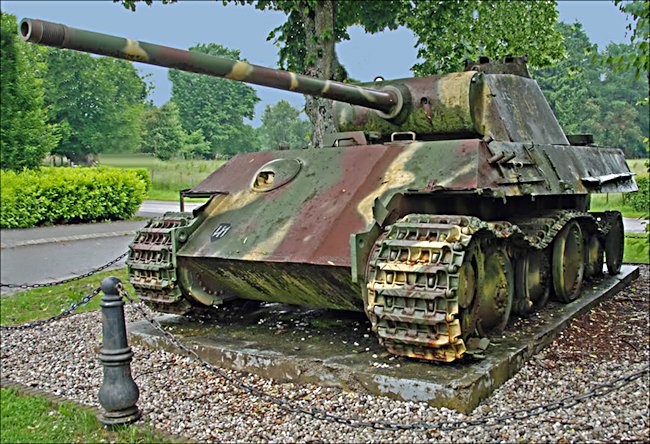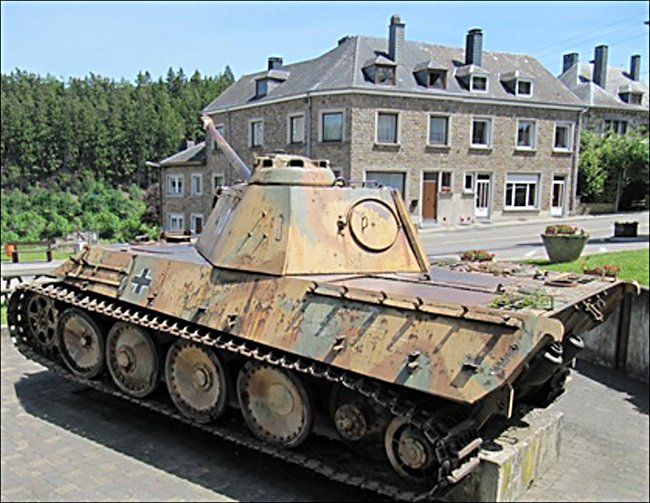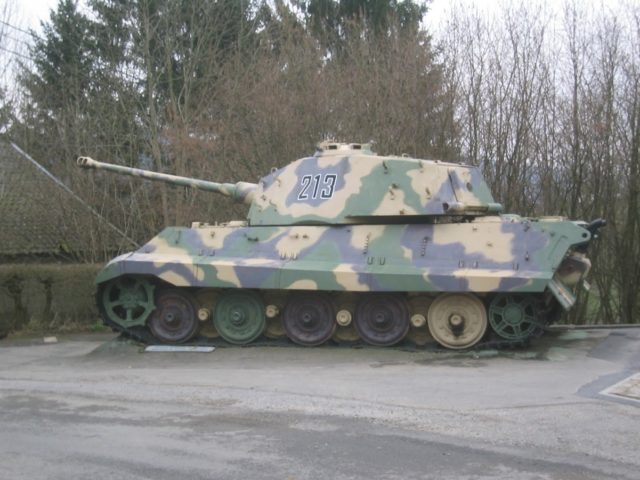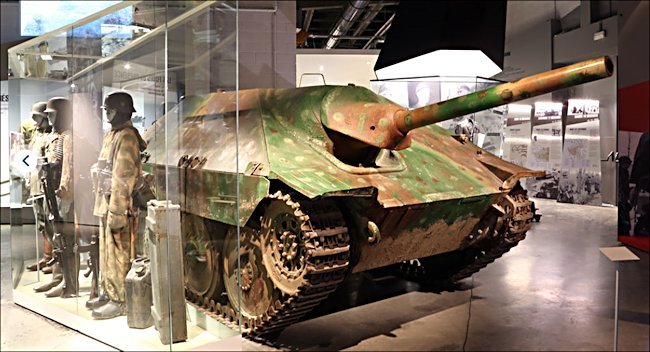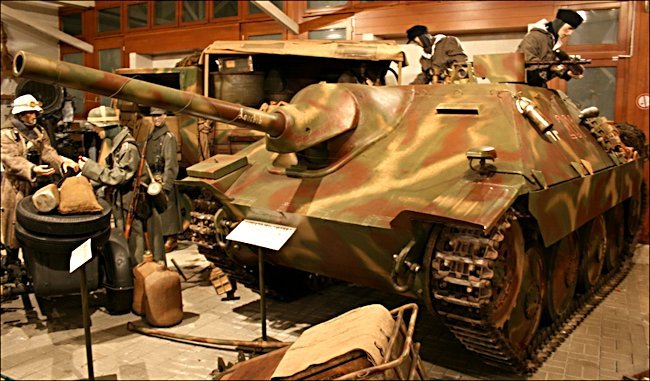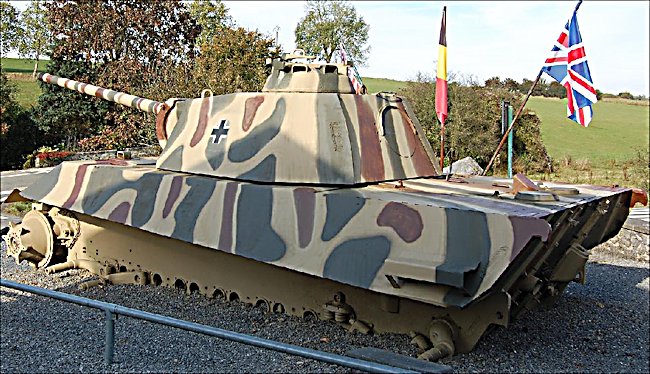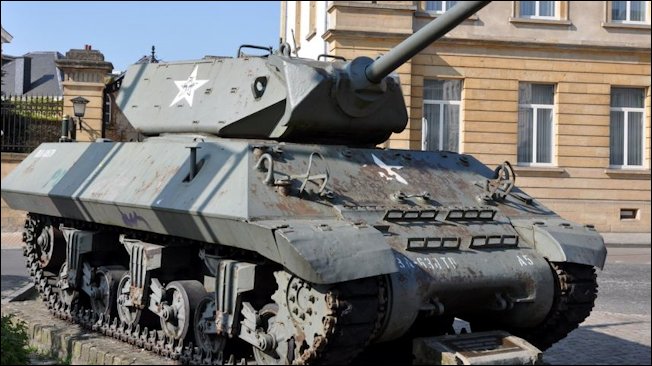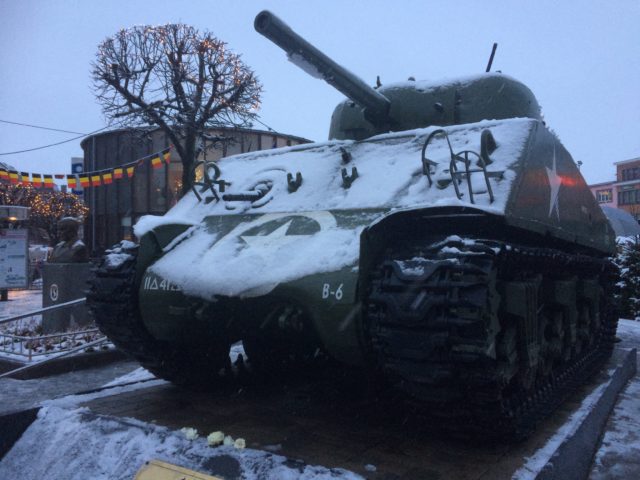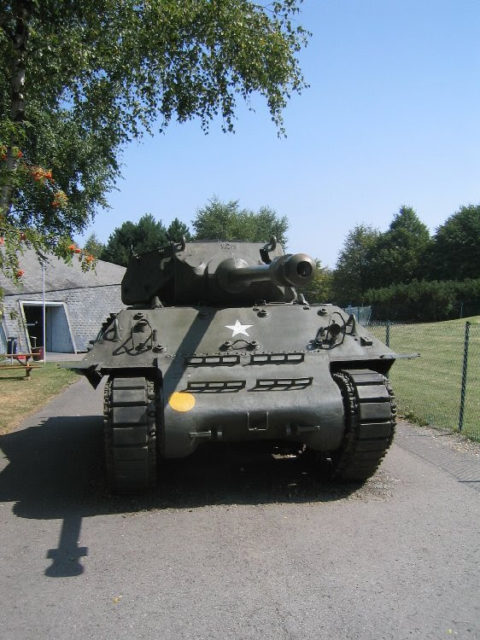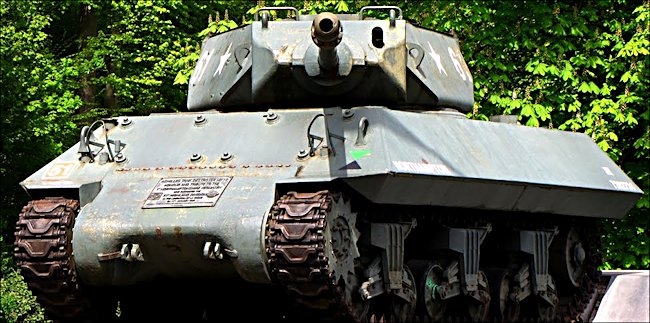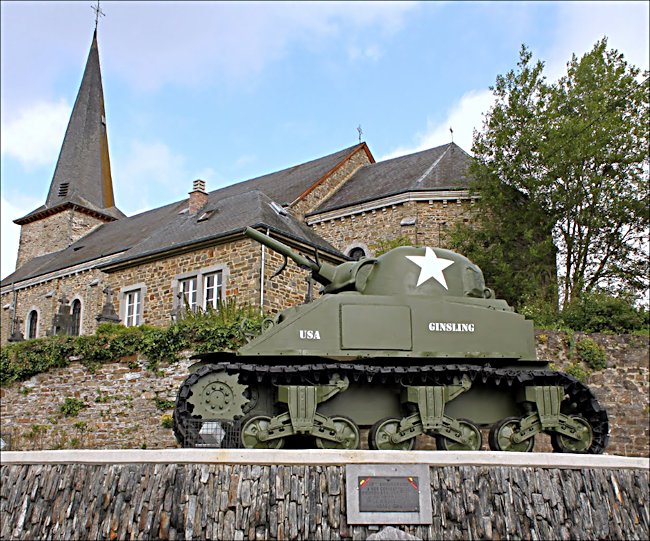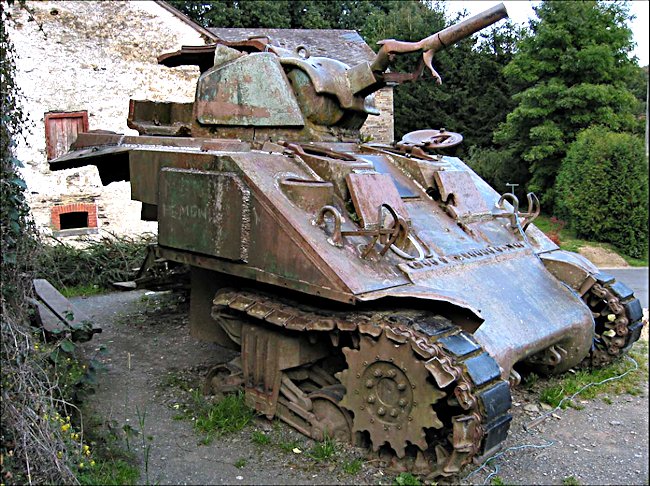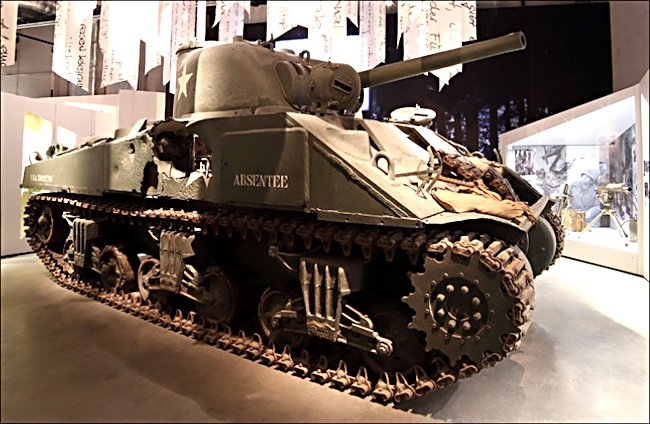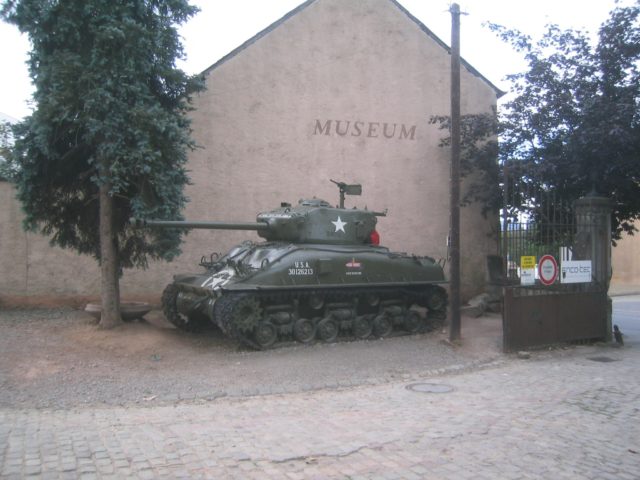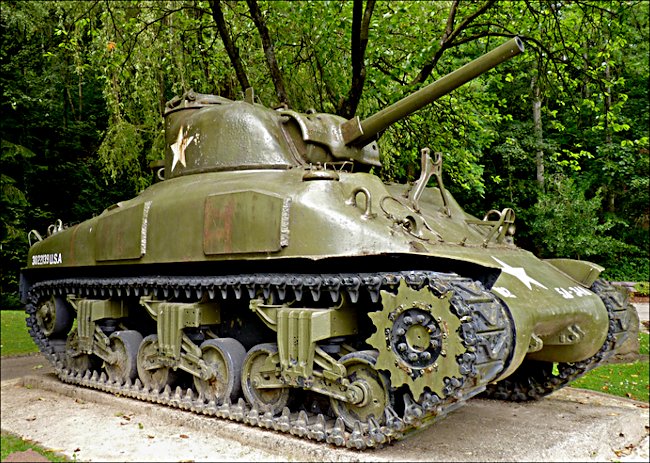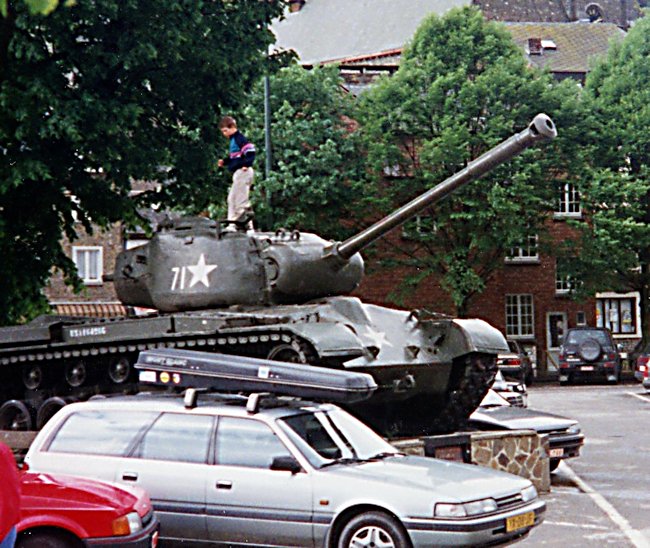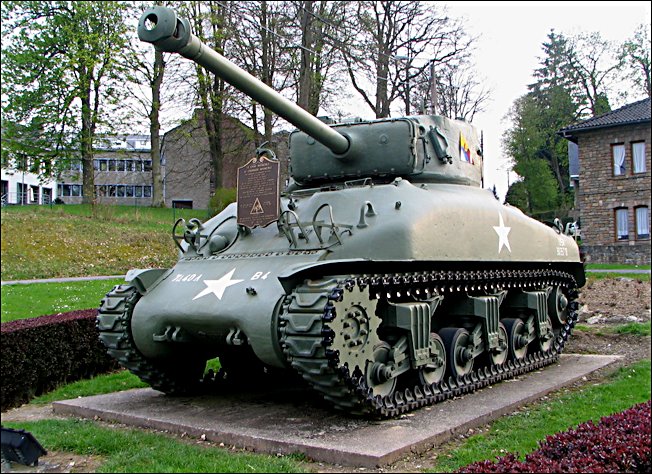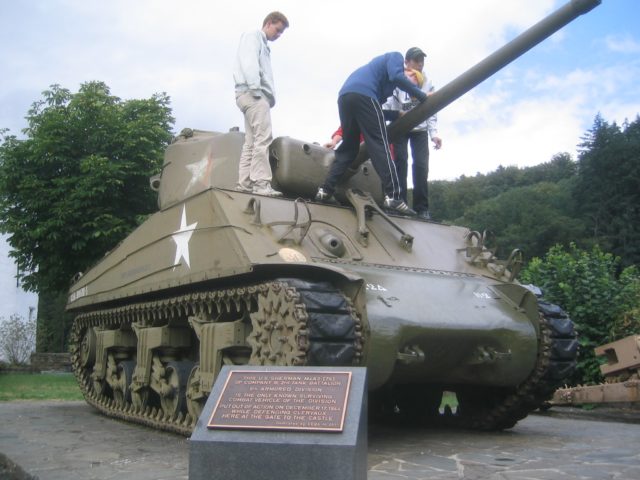In June 1944, the Allies landed on the beaches of Normandy. In the following months, a liberated France from Nazi occupation advanced toward Germany itself with unexpected speed. In response, the Germans mounted a huge counter-attack through the Ardennes forests spanning Belgium, Luxembourg and France.
The aim of the offensive was to recapture the important Belgian port of Antwerp. The Germans called the operation ‘Watch on the Rhine’. The Allies called it the ‘Battle of the Bulge.’
The attack caught the Allies by surprise. Though victorious, the cost to the Allies was heavy. United States forces bore the bulk of casualties. In fact, the US lost more men in the Battle of the Bulge than in any other engagement of World War II.
The Germans also suffered intense casualties. Germany’s tanks, which were the great power of the Wehrmacht, were severely reduced. Germany thus lost its power to launch offensives.
There are a number of monuments to the Allied and Axis tanks that fell in the Ardennes campaign. The following is a list of the tanks and where they can be found.
German Panther Tank PzKpfW V Ausf.G in the village of Grandmenil
Grandmenil is a village in Luxembourg. The Panzer V was part of the 2nd SS Panzer Division ‘Das Reich’. It was abandoned at Grandmenil because it ran out of fuel.
It was recovered in a field, it is dirty, and its paintwork is worn.
Houffalize Panther Tank
This tank is in a preserved state in the village of Houfflaize, Belgium. It is located at the junction of the N30 Rue de Bastogne and the Rue Saint Roch.
A King Tiger does something really silly at La Gleize
La Gleize is in Belgium. On December 16, four Tiger I tanks came upon the US 825th Tank Destroyer Battalion Battalion. The 825th was given the task of impeding the German advance at the Ambleve River Bridge.
The approach to the bridge was icy and treacherous. The Tigers were too preoccupied in negotiating the road to effectively engage the defenders. Subsequently, all four were destroyed.
Jagdpanzer 38(t) Hetzer tank destroyer at the Bastogne Historical Center war museum in Belgium
The Jadpanzer 36(t) Hetzer is in the Bastogne Historical Centre War Museum. The destroyer was presented to Hitler on April 20, 1944, his birthday.
It was modeled on armored vehicles such as the Stug III. It had a fully enclosed and armoured chassis. For this reason, it was classified as a Jagdpanzer rather than a Panzerjager.
Jagdpanzer 38(t) Hetzer tank destroyer at the Diekirch War Museum in Luxembourg
During the last couple of years of the war, the Germans were in desperate need of materials. The Allies were bombing German factories, and production targets could not be met.
The Germans began mounting large guns on the chassis of obsolete tanks. They were known as Jadpanzers or tank destroyers. There is a Hetzer in the Diekirch Museum in Luxembourg.
German Panzer V Ausf.G Panther Tank in the village of Celles
Celles is a village in Belgium. The Panther displayed here was part of Army Group Kampfgruppe von Cochenhausen, 2nd Panzer Division which passed through Celles. The commander asked the local café staff if the road to Dinant was clear.
He was told that it was mined. The tanks bypassed the road by driving over a field. But the field too was mined, and the Panther was destroyed. It was left in the field until 1948 when the café owner Marthe Monique place the tank in front of the café, now renamed ‘Le Tank.’
Arlon M10 Wolverine
This M10 American tank destroyer is in the town square of Arlon. The square is called Place Leopold. The destroyer was part of a force that was attacked by the 2nd SS Panzerkorps on Christmas Eve in the village of Manhay. One Lieutenant Colonel Richardson escaped from a burning Sherman and saw two M10 Wolverines.
Richardson saw a silhouette which he believed to be a German Panther, and so ordered the first destroyer commander to fire on anything that moved. The other Wolverine was moving in the direction of the Panther without realizing it was there.
Richardson pursued it through the snow until it backed up. Richardson pointed toward where he had seen the Panther. At that point, the first Wolverine fired into the side of the Panther which had suddenly appeared. Flames burst from the Panther. It was damaged, but it fired its 75 mm gun on the second Wolverine. It was only thinly plated and so burst apart.
The remaining Wolverine returned fire, but the shell was deflected off the Panther’s sloped armour. The Panther turned its turret toward the Wolverine, fired, and the destroyer fell on its side, smoking.
Bastogne M4A3 Sherman
A Sherman tank has been restored and exhibited in the main town square in Bastogne.
Bastogne 17pdr Achilles
This is on display outside the Bastogne Historical Centre. It is painted to look like an American Wolverine of the 705th Tank Destroyer Battalion but is, in fact, the more powerful British 17pdr Achilles.
British tanks played a vital role in the Battle of the Bulge, though this particular tank did not take part in the battle.
La Roche MkIIc Achilles 17pdr
This Achilles resides in the Belgium village of La Roche-en-Ardenne, on the Avenue du Hadja.
Wibrin M4A3 Sherman Tank
Wibrin is a Belgian village. The tank is preserved at the junction of the Rue du Tilleul and Rue du BourgHans Herost. A German tank commander remembered encountering the Shermans near Wibrin. ‘We did not take the streets, but drove across the fields and meadows because of all the mines.
We were on the hill about 1,000 metres way from the village church. From up there we saw the Sherman tank that is now the war memorial in Wibrin. It was in the same place on that day. This tank with its small gun was barely a threat to us. Jokingly we just called it a knocking device. The Panther tank that was next to me was shot.
The shell hit the sloping front armour and bounced off. You can still see the deep gouge on the front. It bounced upwards and hit the Sheman’s gun damaging it. When the American crew fired, the tube burst.
You can see the damage it caused today. The second shell hit the big bolts on the bottom of the front armour and again bounced off. The third hit went through the armour and it caught fire. We proceeded with our advance.’
Bastogne M4 Sherman Tanks
These Shermans are on display at the Bastogne Historical Centre War Museum. It exhibits severe damage on its side.
In 1942, these Shermans could knock out any German tank, but as German technology advanced they became out classed by German firepower and armour.
They consequently had to get close to panzers in order to target their weak sides. When it did, however, it was superior I tank to tank engagements. American factories made huge numbers of them in order to overwhelm the enemy.
Surviving M4A3(76)W Sherman Tank in the village of Beffe in Belgium.
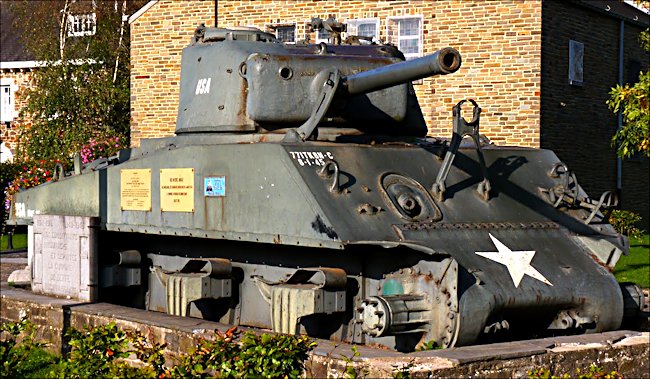
This Sherman is restored and displayed on the central roundabout in the Belgian village of Beffe in December 1984. It had been left in a field for many years with its turret aimed at an enemy tank. It is marked as a tank of A Company, 22rd Tank Battalion, 3rd Armoured Division.
Diekirch M4A1(76)W Sherman Tank
The tank is displayed in the grounds of the Musee National d’Histoire Militaire, Diekirch, Luxembourg.
The Museum also exhibits a German 75 mm Pak 40 anti-tank gun, and a German Jagdpanzer 38(t) Hetzer tank destroyer. The latter was an important German weapon in the Battle of the Bulge.
Ettelbruck M4A1 76mm Sherman
This tank is part of the General Patton Memorial at Ettelbruck, Luxembourg. It belonged to the Headquarters Company of the 5th Armoured Division.
The missing M26 Pershing Tank
This Pershing was not actually at the Battle of the Bulge but did see combat in the last months of the war. It stands as a memorial in the Place du Graver. In 2004 it was replaced by an M4A1 (76) W Sherman Tank as more representative of the forces that liberated the town.
There is a hole in its armor where it was damaged by a shell. The Pershing was transferred to Le Camp Roi Albert in Marche.
Vielsalm M4A1 76mm Sherman
This tank was offered to Vielsalm in Belgium by General Bruce Clarke. It arrived on February 20, 1984, and can be seen on the Rue Hermanmont.
Clervaux Castle M4A3 Sherman Tank
The Clervaux Museum at Clervaux Castle, Luxembourg was opened on June 2, 1974. It is on the site of a battle that occurred there on December 17, 1944. All the items on display are relics of the battle.
These include bazookas, machine guns, and artillery pieces and, of course, the Sherman tank.
The tank served as part of Company B of the 2nd Tank Battalion, US 9th Armored Division. Its hull and turret shows signs of battle damage.
